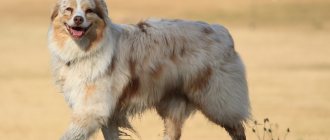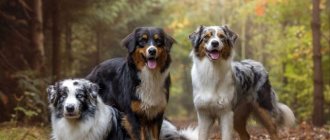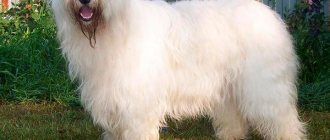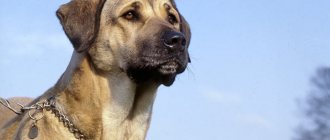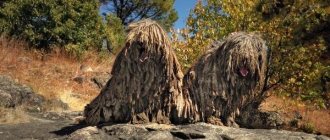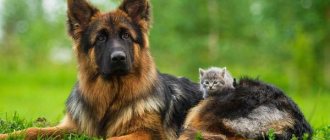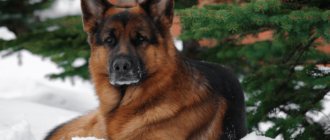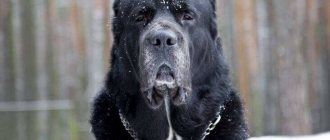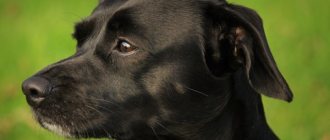Hello! Welcome! Telephone:
(Anastasia)
email:
- Breed consultations
- Registration for puppies
- Training recommendations
“Do not live in a city where you cannot hear the barking of dogs” (Talmud)
The first puppies in our kennel were born 25 years ago. Our heart has always belonged to the FCI Group 1 breeds. Then, 25 years ago it was collies. These were wonderful dogs with pronounced working instincts, tough, capable of passing the OKD and ZKS standards the first time. We were proud of our dogs, but circumstances forced us to temporarily suspend breeding activities.
Test for future owners
Dog training and dog sports became priorities. In our family there is both an instructor for the working qualities of dogs and a handler who competes with dogs at international competitions.
And now, years later, we returned to breeding work. We have become, in a good way, fans of the Australian Cattle Dog or Australian Heeler breed. These are amazing animals, and we feel all our responsibility to the people who created them. We want to preserve the breed qualities of these dogs and not let them turn into sofa “show pillows”.
Registration for puppies of the next litter
Our nursery is developing along the lines of thoughtful formation of breeding stock and scrupulous selection of pairs with such a priority as to preserve as much as possible the old Australian lines of such nurseries as PAVESI, KOMBINALONG, YARINGAH and others.
The working qualities and sporting potential of this breed are enormous. However, first and foremost, the Australian Cattle Dog is a partner, companion and true friend of its owner. It is said about this dog:
“I'm not a dog. I'm a healer. I'm on both sides of the barbed wire ¶¶¶ I'm half dingo there, half shepherd here
[referring to the fact that in Australia the grassland is separated from the wild part by barbed wire]
.
I am either your best friend or your worst enemy, depending on your attitude towards me. I can tend a flock of the wildest cows or the gentlest sheep with equal determination. I can work all day in snow storms, pouring rain or extreme heat, and then ask you to throw me a ball when we're done. I will argue with you every step of the way. After all, I know what I'm doing and what the best way to do it is. I'm easy to feed. I'll eat your steak or the rotten meat I found in the field. New article on the site
You don't need a navigator in the fields.
I will protect you from robbers, other dogs, snakes and that strange shadow in the corner of the barn. I will climb onto the bed and sofa. I will steal your sandwich, your chair, your shoe and your heart. You'll never have to go to the bathroom alone. I will lick your face right after I eat fresh cow dung. I will sleep next to you when you are sick and heal you with my love. I'm Hiller. Respect me. Love me. But NEVER underestimate me." (Lyn Melnechenko)
Our puppies are only for those who share our understanding of these dogs!
Description of the Aussie breed
Popularity 153rd among 263 dog breeds
Lifespan:
13-15 years old
Breed group:
Shepherd's
Height:
males: 52-58 cm, females: 46-53 cm
Country of origin:
USA
Average price:
60 thousand rubles
Weight:
males: 25-30 kg, females: 18-25 kg
Latest articles Cat health
Rabies vaccination for cats: choice of vaccine, necessity, schedule 01/22/2022 4 0 0
Selection and adaptation
TOP 20 best cat breeds for families with children 01/22/2022 25 0 0
Key facts
The country of origin of the Aussie is called the United States of America - despite the full name of the breed (Australian Shepherd). The dog's endearing appearance hides in it a strong protector of its family. The dog will cheer you up with funny antics and inexhaustible optimism.
As for the “technical” characteristics of the Aussie breed, the weight of the dogs varies from 18 to 30 kg, and the height at the withers of the male reaches 58 cm, the female – 53 cm. The maximum life expectancy of the Aussie is 15 years. It happens that individuals live longer.
Dogs learn so well and quickly that they are taken into service as “furry soldiers” or used as guide dogs.
Due to their easy-going and cheerful nature, Aussies get along well with other animals, especially dogs. Due to their good-natured appearance, it may seem that Australian Shepherds are useless against aggressors, but this is not the case. Aussies are capable of protecting their owner, his family and home.
The breed is accustomed to an active lifestyle, so to keep your pet in good shape, exercise him for at least an hour every day. Of course, during walks.
It is difficult to keep a furry giant in an apartment due to the ubiquity of wool. If you love walks with your four-legged pet, then you will experience the unpleasant consequences of shedding.
The description of the Aussie breed emphasizes its hyper-responsibility. Leave her in charge and ask her to look after the baby or the cat that lives in the house - rest assured, your order will be carried out with great pleasure.
Owners observe a noticeable difference between boys and girls among Aussies: it manifests itself both in the size of the dogs and in their character. For example, females have less long hair and thick hair, while representatives of the stronger sex have a dense physique and impressive volumes. The Aussie man is jealous of his possessions - you only have to look at his stature and his regal posture to understand this. Ladies will not once again enter into a dispute over territory.
"American Australians" are found in different coat colors - black, red and blue merle, in combination with red and white colors. With age, the coat darkens.
Video
* We invite you to watch a video about the Australian Shepherd . In fact, in front of you is a playlist in which you can select and watch any of 20 videos about a given dog breed by simply clicking on the button in the upper right corner of the window. In addition, the material contains quite a lot of photos. By looking at them you can find out what an Australian Shepherd looks like.
In this article:
|
Aussie Origin History
Despite the name of the breed, experts say that it was bred in America. Why then is the shepherd Australian?
In the 19th century, Merino sheep began to be widely bred in Australia, producing soft, delicate and very warm wool. To protect their herds, shepherds brought in local dogs - tigers. Translated into modern language, these are German Shepherds and the ancestors of Aussies.
According to another assumption, the ancestors of Aussies were not tigers, but coolies and kelpies, bred to guard livestock. The dogs were strong, resilient and so smart that they made decisions without the owner’s instructions. At the same time, the four-legged shepherds did not touch the cattle.
Wool from Australian sheep became popular in America at the end of the 19th century. Aussies were also brought into the country along with wool, and local cattle breeders appreciated the dogs’ abilities and quickly put them to work.
The first breeder's name is Juanita Eli, she brought the ancestors of the shepherds from Australia. Then farmer Jay Sisler began breeding dogs for rodeo performances. Three furry performers - Queenie, Stubby and Shorty - aroused such public interest that the Walt Disney Company invited them to shoot films. After the release of the films, many people wanted to buy cute Australian Shepherd puppies. The breed was officially registered in 1977.
Reproduction and lifespan
The shepherd dog is endowed with excellent working potential. He is responsible, agile and resilient. The breeder of the breed must ensure that the puppies in the litter inherit the entire set of these qualities. That is why the responsibility for the correct selection of candidates for mating falls on him. So, an Australian Shepherd suitable for breeding should be:
- Sexually mature.
- Not very old, less than 7 years old.
- Hardy.
- Slender, not overfed.
- Psychologically adequate.
- Fully comply with the breed standard.
Starting from the 3rd day of the shepherd bitch's heat, she can be taken to the territory where mating is planned. It is not advisable for a female to meet a male on her territory, since she will feel too confident being at home, so she may simply not let him near her. Her puppies are born approximately 70 days after breeding. They are noisy, active and quickly become independent.
Aussie appearance
General impression
The Aussie acquired harmonious body proportions not so long ago - the first representatives looked rather rough. The appearance has changed over the centuries. The dog is described as a mix of Border Collie, Heeler and Pyrenean Shepherd. You may hear Aussies called "Ossie" (English manner). From the first impression it is clear that the dog is smart and loyal. Even an inexperienced dog breeder will notice at first glance at a photo of an Aussie that the breed was bred to help shepherds.
Head
The shepherd's head is large, proportional to the body, with a rounded skull and flat forehead.
There may be a small bump on the back of the head. The muzzle is elongated and narrowed. On the nose there is a pronounced pigment in the color of the main color. Blue and black dogs can have a black nose, while red dogs can have a brown nose. The ears are rounded-triangular, sometimes broken and directed forward, not docked or drooping.
The look is wary, but friendly. The eyes are almond-shaped and can be green, brown, blue and amber. There are dogs with irises of different colors, and this is normal.
The jaws are pincer-shaped and consist of 42 teeth - 20 on top and 22 on the bottom.
Neck
The Aussie's neck is arched, neither long nor short, sits firmly on the shoulders and is muscular.
Frame
The breed is long-haired and has a wide body, but the thick coat hides muscles rather than excess weight. The chest is deep and prominent, the stomach is tucked. The dog stands perpendicular to the ground.
Forelegs
The breed's shoulder blades are located close to the withers at an angle of 45 degrees. The elbow is located exactly between the surface and the withers. The paws are strong with oval feet ending in curved toes.
Hind limbs
The knees are well defined and arched. The thigh and pelvis are located perpendicular to each other. If you look at an Aussie from behind, you can see that the dog's legs are parallel to each other and perpendicular to the ground. There are no hind toes on the paws and the pads are thick-skinned.
Tail
Puppies are born with a short tail. If not, then it is customary to stop it. Initially, the breed had a long tail covered with fluffy hair.
Movement
The shepherd moves with sweeping steps, the step is fast and light. The Aussie does not hunch his back while running – he keeps his back straight. She is agile and changes direction with lightning speed as she moves.
Wool
The coat is double and hard, changes twice a year, slightly wavy. In cold conditions, the undercoat thickens, and vice versa. On the head and ears the hair is short and smooth, and on the back of the leg the hair is feather-like in length. Males have a fur collar and an almost lion's mane.
Color
Aussies come in graphite, brindle, sable and even golden colors. But pets of these colors do not participate in exhibitions. The standard recognized only four colors: black, marbled blue, marbled red, red. As the dog grows, the coat darkens. It’s up to you to choose what color you want to buy, but when purchasing, pay attention that the predominant color should be found around the dog’s eyes.
Size
When standing, an Aussie boy reaches 58 cm at the withers. Aussie girls are shorter - about 46-53 cm, and their weight is much less than that of males, so they look fragile and feminine. The weight of an Aussie does not exceed 30 kg. Anyway. In general, shepherd dogs do not look very large, but a little massive due to their thick coat. The size of the Aussie allows it to be classified as a large breed dog.
Character
They are very gentle, energetic and hardworking dogs that you can rely on. They love their owners very much, are happy to play with small children, and are vigilant to ensure that nothing happens to them.
The Australian Shepherd is a unique pet nanny. He will obediently look after the baby, take care of him, and calm him down if he is upset about something. He will never offend or betray him. Children also love such dogs, as they feel the care coming from them.
If the baby falls or hits himself, the animal will immediately come up to lick the bruised area. At the moment, he is driven by the protective instinct. As is known, dog saliva contains special substances that have a wound-healing and antiseptic effect on the skin.
Energy is another of the main characteristics of such a dog. It's hard to find an Australian Shepherd that hangs around the house doing nothing, especially during the day. Usually, she is always busy with something: running, chasing birds or cats, jumping, digging holes, etc. She does not like to spend time alone.
The best way to spend time for such an animal is to play with people or their own kind. This dog is a unique breed. What makes it unique? First of all, it is the ability and desire to bear responsibility. Not every herding breed is endowed with this quality.
The Australian Shepherd is a very friendly and friendly dog. She never shows aggression towards members of her household, and, in fact, towards other people too. Completely ineffective as a bodyguard. Devoid of natural intolerance.
He does not lose vigilance, but uses it only when it is necessary to show responsibility, for example, to look after a child. Remember, the roar coming from this dog is always of a warning rather than an aggressive nature.
This is an affectionate and caring breed that always strives to be closer to people, literally. Its representatives sit for a long time next to the owner, ask for stroking, offer games, and follow him around.
Human attention is extremely important to them. They will try to win the affection of their loved one. Tend to be obedient. Destructive behavior is very rare for them. Such a dog is capable of “dirty tricks,” but only if he is very offended by his beloved owner.
One way or another, the Australian Shepherd is a good pet option for a large family. She is obedient, smart and very loyal. It chooses its owner only once in its life. Gets depressed if he expresses disapproval. Very vulnerable and sensitive.
Aussie character
Conditions of detention:
Daily physical activity and frequent walks outside are required.
Suitable for:
Experienced owners.
How they differ from other breeds:
they can smile.
This breed will awaken emotions even in the most callous owner. It's a rare dog who can smile, and with all 42 teeth. Aussies have inherited from their ancestors the habit of keeping an eye on the herd, which will manifest itself during family outings. The pet will be able to keep an eye on even fidgety children.
Shepherd dogs are so positive and friendly that they also approach other pets on a first-name basis, be it a parrot or a chinchilla. You will not be embarrassed for barking for no reason, like the owners of other breeds - the genetic upbringing is so impeccable that the dog will not be the first to bully anyone in the world. But as soon as he feels a threat to himself or his loved ones, do not expect mercy, both his excellent physical form and the death grip of his sharp teeth will be demonstrated.
An adult dog may not greet your acquaintances when they meet you on the street, as they are loyal to you. And the puppy, besides the owner, is jealous of toys and food.
If you have a pet, then give it an outlet for its energy, otherwise life in the apartment will turn into hell - the dog behaves well at home only if it is tired outside. In the heat, your four-legged friend will get tired quickly, and in winter, due to his thick double coat, he can walk for a long time.
How much does an Australian Shepherd cost?
The Australian Shepherd is quite rare in Russia: only about fifty individuals are registered. The parents of almost all of these dogs are representatives of the champions of the breed, with exceptional working qualities. If you decide to purchase such an Aussie puppy from a nursery, be prepared for the fact that it will not be cheap – from 60 to 85 thousand rubles. However, if you are not going to take part in exhibitions or breed dogs, then you can save on your purchase by purchasing a puppy with disqualifying defects (usually this concerns color). In any case, you will get a cute and smart four-legged friend.
Education and training
Due to the protective function inherent in nature, a pet can overly aggressively defend its territory. This indicates a lack of education and training for the Aussie. Deviations also include such a quality as cowardice.
Start explaining to your pet the norms of behavior when it first appears in the house. Show authority - a well-mannered dog should know who is boss in the house.
Aussies are easy to train, as they are generously gifted with intelligence. Just 30-40 exercises - and you have a well-trained dog. Start with commands that will help your four-legged friend feel safe - calling and “Ugh!” Motivate your shepherd with treats and start with home lessons and then practice outside. In summer and spring, do not train in the heat, and in autumn and winter, train in any adequate weather. Let the student do his chores and walk around first, and then start his lessons.
Is it possible to use rough methods when training? Under no circumstances - otherwise the dog will turn from a guard into a timid animal. With the right approach, problems with raising an “Australian” will not arise.
Aussie health and illness
Possible diseases
Dogs of this breed need to have a set of vaccinations at an early age to avoid health risks. This is Lyme disease, rabies, carnivore plague. “Shepherds” are also susceptible to eye diseases - cataracts, poor vision, epilepsy.
To avoid possible total deafness and blindness, do not crossbreed two merle colored dogs.
But over the course of a lifetime, all the diseases on this small list can bypass a dog. Health largely depends on care: clean your pet’s ears, teeth, and fur. Dock the tail and periodically take it to the vet for a full checkup.
Obesity occurs when dogs are overfed and malnourished, move little and are confined to an enclosure or apartment. Take care of proper nutrition; in some cases, you will need to consult a veterinarian.
Reproductive health
If you have a girl and you decide to do without childbirth and offspring, then sterilization should be carried out between the first heats. To breed puppies, you need to find a suitable male partner and breed the dogs under supervision. The first mating usually takes place when dogs of both breeds reach one year of age. In a bitch this should happen during her second or third heat.
Diseases and health problems
Australian Shepherds are distinguished by their strong physical health. All diseases can be caused by improper care/nutrition or genetic predisposition.
Dogs of this breed are prone to the following diseases:
- Incorrect bite. It is transmitted only by heredity. The bite cannot worsen due to an incorrect diet. Its exclusion is possible only by preventing the breeding of dogs with this disease;
- Cataract. Also a genetic disease. It is quite rare, but involves treatment;
- Joint dysplasia. A very common disease that does not allow dogs to live a full life. Installed only during an x-ray;
- Epilepsy. This disease can manifest itself in shepherd dogs aged from 8 months to 6 years;
- Autoimmune diseases. The most serious and dangerous diseases, most often inherited. When properly maintained, dogs' immunity is strong enough and can withstand external tests.
Representatives of this breed are also characterized by deafness, kidney and heart problems, and retinal atrophy. The main signs of the disease are severe passivity and lethargy, loss of appetite, lameness, lack of interest in once-favorite pastimes, etc.
Any manifestation of illness should entail a mandatory visit to the veterinarian. You should not ignore the symptoms of illnesses. Otherwise, the diseases can become progressive, which can shorten the pet’s life or deprive him of full activity. You should undergo a veterinary examination and receive vaccinations regularly.
Features of feeding and diet
Feed your Aussie porridge - oatmeal, rice, buckwheat - and chicken, turkey, beef, and lean fish. Diversify your diet with vegetables and fruits. Raw and boiled carrots, turnips, pumpkin, zucchini and apples will help you prepare for the cold season.
If you don’t have time to cook, choose premium dry food without a lot of protein. What food to give and how to feed it is up to you, but remember the golden rule - combining homemade food with ready-made store-bought food is highly undesirable. Ideally, you should contact your breeder or veterinarian for advice.
It is forbidden to treat your Aussie with raw eggs, alcohol, soda, or coffee. Do not feed fried or table foods, long bones, fruits with pits, river fish or chocolate. Avoid raw meat, bones, mushrooms, nuts and citrus fruits.
Puppy Feeding Guide
Mix cottage cheese with kefir and feed the baby. Milk porridge and quail eggs can be used. A one-month-old puppy eats every three hours. At six months, feeding is reduced to three times.
Adult Feeding Guide
If your pet does not get used to the new feeding regime, then do not deprive him of three meals a day for up to 14 months. Feed your dog small portions, pieces of meat and fish. How much to feed - norms are calculated not by age, but by body weight, but no more than 1.5 kg per day for the largest individuals.
Monitor the temperature of the food and consistency - it should be warm and not burn your fingers, the texture of thick sour cream. Remove food that your pet has not eaten 15 minutes after the start of the meal.
Nutrition
The Australian Shepherd is completely unpretentious in its diet. Both dry food, selected taking into account the breed and age of the dog, and natural food are suitable. When feeding on dry food, you should take a responsible approach to choosing the manufacturer. Many cheap foods are bean-based, which is contraindicated for dogs.
When eating natural food, it is necessary to properly adhere to a balanced diet. Aussies eat porridge, lean meat, and any kind of vegetables well. Don’t forget about the drinking regime, it is always necessary.
You can give your Aussie milk, but introduce it into the diet gradually and do not pour it often. In addition, you should limit your dog's consumption of chicken eggs, seafood and other potentially dangerous foods that can cause an allergic reaction.
They should be introduced carefully and gradually. It is also recommended to add various vitamin supplements designed for dogs to their food. Vitamins and feed additives are especially important in the autumn-spring period.
Two Aussie friends on the field in summer
It is not advisable to feed your Australian Shepherd from your table. It is not recommended to mix dry food with natural food, as this threatens the pet with the development of gastrointestinal diseases.
Care and maintenance
Don't expect your Australian Shepherd to spend hours lying on your lap on a cozy sofa. Look at the photo of the Aussie, how lively and muscular he is! With such a rare specimen, you will have to walk two hours a day - otherwise forget about good behavior and obedience.
In summer, do not let your pet suffer from heat; go outside in the morning and evening when it is cool. Aussies are workaholics and are ready to carry out their owner’s commands with pleasure, despite their health. You may not realize that the dog is feeling unwell and even injured - he will run until he falls. The responsibility is on you - be attentive to your friend and do not push him.
Do not chain your shepherd and leave him alone. Choose a place to lay your bed away from drafts and radiators. Place a drinking bowl with clean water nearby. Ventilate the room, otherwise you will face eternal molting.
A long-haired breed should not be allowed to breed. Make it a habit to brush every other day, and daily when shedding.
If this is not done, then the home will not only drown in fur, which is not so bad, but the pet may develop dermatitis or parasites on the skin. Choose a metal brush with wide teeth. Carry out washing once every two months. Keeping and caring for an Aussie is not much of a hassle if the dog is accustomed to hygiene procedures from childhood.
Nail care occurs naturally. For example, when a dog walks on stones and asphalt, grinding its claws. If you don’t pamper your Australian with frequent walks, trim his nails yourself once every two weeks. Otherwise, they may grow in or become damaged and fester.
For the oral cavity, purchase brushes and pastes, bones from the pet store to remove plaque from the teeth.
Wipe your eyes with tea leaves. Clean your ears twice a week with cotton swabs and pads. Place a 3% peroxide solution in your ear and remove the wax after half a minute.
Tips for choosing a puppy
Seek advice from professionals: a specialist consultation will guide you on the price and characteristics of the animal.
Healthy Aussie puppies resemble a plush toy, and their fur is free of bald spots and tangles. Examine the abdomen - the skin should be clean, without rashes or hernias.
Clubfoot in babies is a sign of defective breeders from the breeder, so decide for yourself whether to take a dog with deviations from the standards, and at a rather high price.
Choose trusted breeders, and watch videos and pictures of puppies before your trip. Learn about screening dogs for eye and other diseases.
